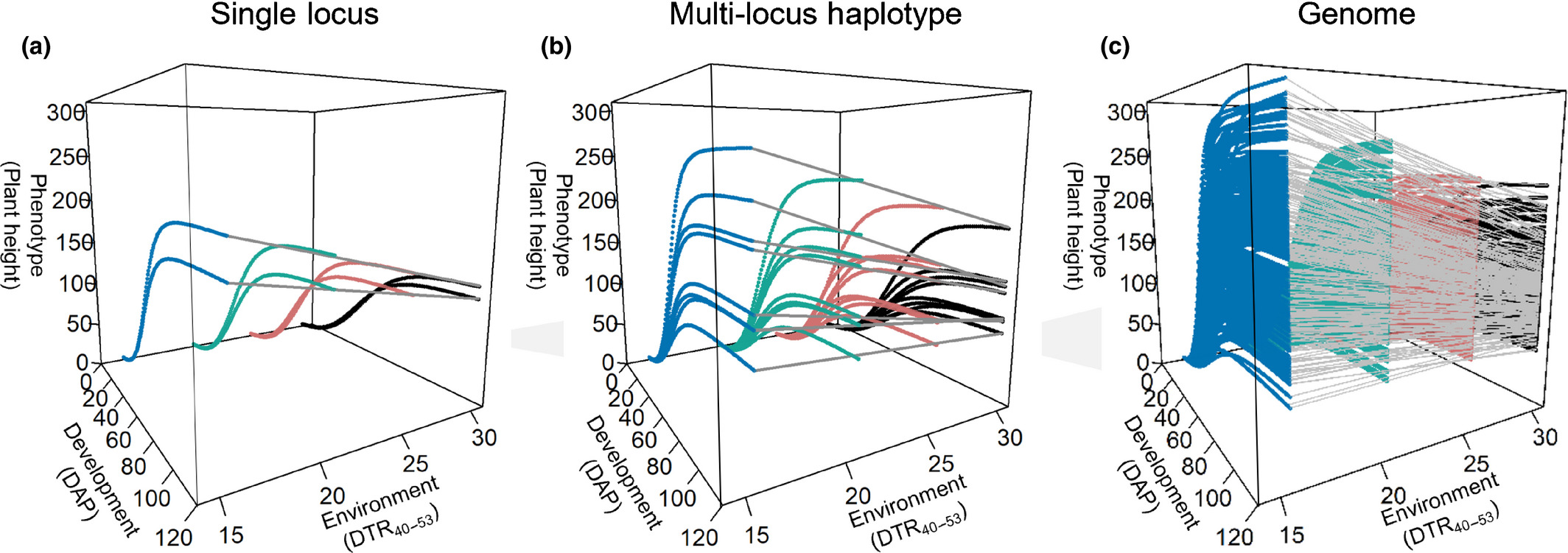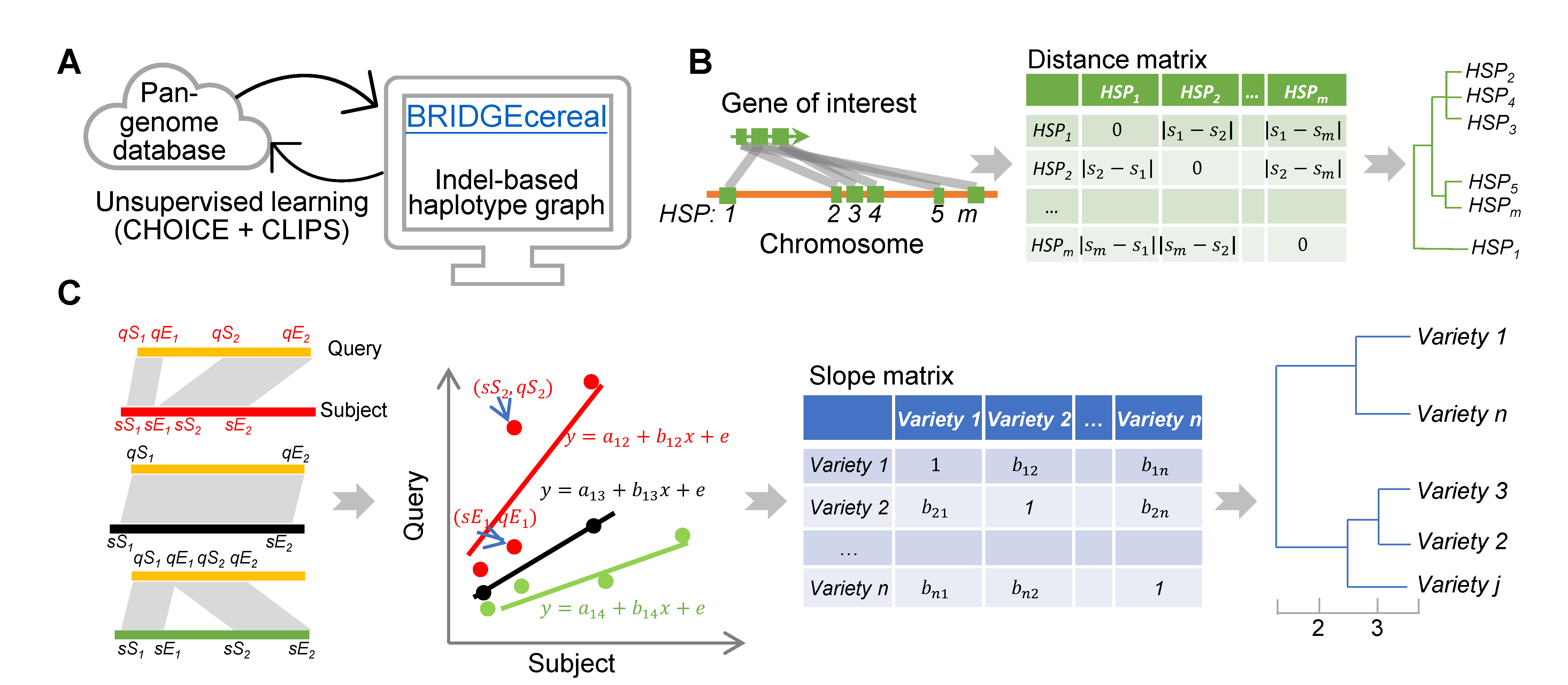We integrate diverse and complex genomic, phenomic, enviromic data sources to investigate evolution, selection and interactions among plants and the environment. Compuational biology, molecular biology, and field research are incorporated into various projects.
1 Sensing what plants sense
The same genotype in different environments can have different performance, i.e., phenotypic plasticity. Understanding the patterns underlying phenotypic plasticity is essential to improve crops growing in natural conditions. With CERIS, the explicit environmental condition impacts the final trait most in natural fields could be identified, enabling exciting new avenues of explorations for the interactions among genetics, environment, and development. New Phytologist (2022), Molecular Plant (2021), Genome Research (2019), and PNAS (2018).
2 Ingrained Climate Change
Climatic conditions, constantly changing, have profound impacts on crop performance. Characterization of such impacts not only requires experimental data, but also suitable approaches. Variety testing trial, a standard step in breeding elite varieties, can be traced back decades. The performance records from these trials not only evaluate the potential of elite varieties, but also the impacts from climatic conditions, which offers emperical data to learn the impacts of climatic conditions. A combination of CERIS and Enviromic Prediction to characterize and exploit the impact of changing climate conditions on crop performance through repurposing long-term variety testing trials. Molecular Plant (2022)
3 Domestication triangle
Crop domestication, an evolutionary process, took place with the synergistic interactions among intrinsic characteristics of the domestication triad (domesticator, domesticate, and environment). Human, as domesticator, based on local environmental conditions, deliberately selected particular characteristics, driven by domesticates’ genetic constituents, to meet human’s various demands. Our study established that sorghum domestication is a compelling model for understanding the complete links of this triad. Nature Plants (2019).
4 Survey and graph large indels
Large indels contribute to phenotypic variations by altering either gene structures or expressions. A pangenome with mulitple de novo assemblies open the possiblity to catalog large indels, but survying large indels for a gene of interest from pangenome is challenging and painstaking tasks. With two novel unsupervised learning algorithms (CHOICE and CLIPS), BRIDGEcereal is developed to streamline the process. The only requirment is a gene model ID. As demonstrated with mulitple wheat genes, BRIDGEcereal could accerelate the process of identifying genes underlying QTL and GWAS signals.









